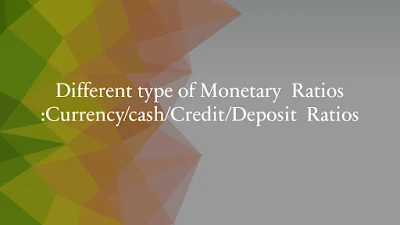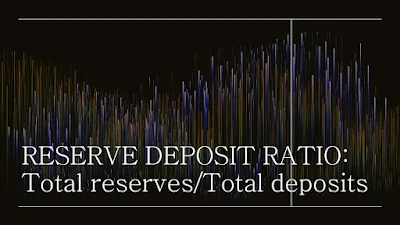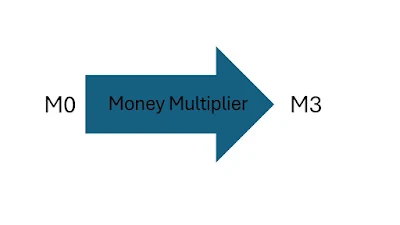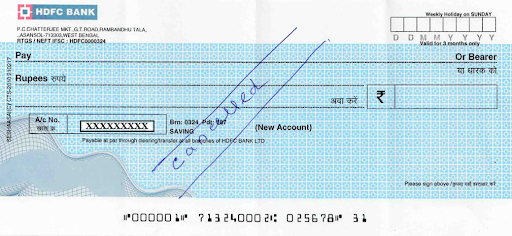MONEY MULTIPLIER:
- The phenomenon in which reserve money (M0) got transformed to another form of money supply ie M1,M2 and M3 is referred to as the money multiplier .
- Money Multiplier is based on the fractional reserve banking system.
- The size of the multiplier depends on the percentage of deposits that banks are required to hold as reserves.
- Money multiplier effect is most commonly seen in commercial banks since deposits are accepted by them and a part of deposits is being disbursed as loan after keeping part as reserves.
- Money Multiplier results in creation of liquidity in the economy .
- Money Multiplier is inversely proportional to the Reserves
- Money Multiplier is directly proportional to the Liquidity in the economy.
- When the reserve requirement decreases, the money multiplier increases, increasing the liquidity in the economy.
- When the reserve requirement increases, the money multiplier decreases, decreasing the liquidity in the economy.
- Lower Cdr-----------------------------------More demand deposits available to bank------------------more credit creation in economy -------------------Higher Money Multiplier .
- Lower Rdr ----------------less reserves with RBI –More money available to Bank ----Higher Money Multiplier
FACTORS AFFECTING MONEY MULTIPLIER :
- Banking habits
- Financial inclusion
- Nature of loans
UNDERSTANDING THE MONEY MULTIPLIER THROUGH FIGURES :
The money multiplier – the ratio of M3 and M0 – has broadly remained stable at an average of 5.1 over April – December 2022 period compared to 5.2 in the corresponding period of the previous year. It has been in the range of 5.46 in feb 2024.
MONEY Supply and Money Multiplier process:
RBI issues /creates certain amount of money ie M---------------------Customer deposited this cheque of Rs M in bank A :
M-----------------M deposited in bank A as demand deposit.
- Bank A------------Reserve M*.2 and M*.8-------Given to firms and Households as Loans and this M*.8 deposited to bank B.
- Bank B------------Reserve M*.8*.2----------------- M*.8*.8--------------Given to firms and Households as Loans and this M*.8*.8 deposited to bank C.
- Bank C-----------M*.8*.8 is deposited and again process of loan started and it goes on and on.
This process of deposit and its reserve continues in economy forever .
• Total money supply ----------M+.8M+M*.8*.8+………………………+..{.8}.
- Value of total money supplied in the economy comes out to be 5M/3 and this money supply 5M/3 is greater than Monetary base ie M.
- This creation of 5M/3 out of M is because of the process of fractional reserve banking.
IS MONEY MULTIPLIER APPLICABLE ALL THE TIMES:
No, If all depositors withdraw and if money multiplier fails then it will lead to bank run
but
It is assumed that all depositors will not withdraw deposit at the same time.
Money Multiplier vs Money velocity (RBI):
- MONEY velocity is not the same thing as money multiplier.
- Money multiplier explains the process in which the “base money ie M0” multiplies in the banking system to the stock of broad money (M3) at any point of time.
- Money Velocity refers to the number of times the available money stock change hands in an economy to create nominal GDP.
- While money multiplier could be derived as “broad money/reserve money”, velocity is derived as “nominal GDP/broad money”.
PYQ in UPSC :
Q. The money multiplier in an economy
increases with which one of the following? [2019]
a) Increase in the cash reserve ratio
b) Increase in the banking habit of
the population
c) Increase in the statutory liquidity
ratio
d) Increase in the population of the
country
Ans: b) Increase in the banking habit
of the population
Q. The money multiplier in an economy
increases with which one of the following? [2021]
a) Increase in the cash Reserve Ration
in the banks
b) Increase in the Statutory Liquidity
Ratio in the banks
c) Increase in the banking habit of
the people
d) Increase in the population of the
country
Ans: c) Increase in the banking habit
of the people
















.jpg)






